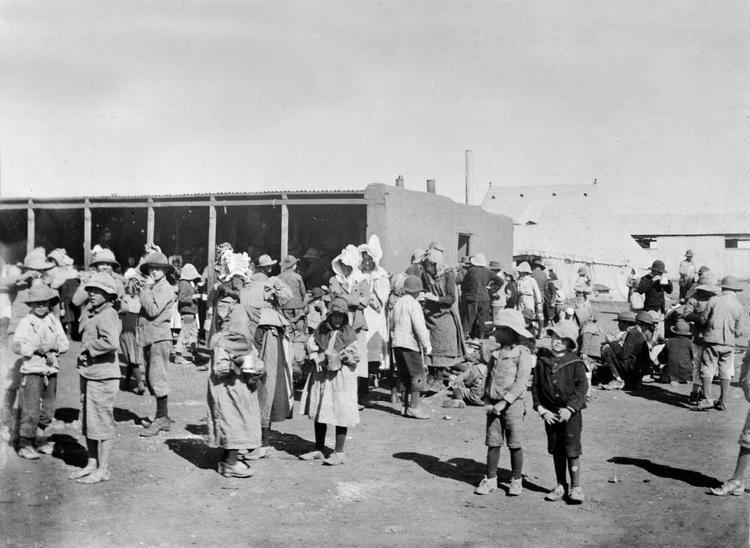 | ||
Internment is the imprisonment or confinement of people, commonly in large groups, without trial. The term is especially used for the confinement "of enemy citizens in wartime or of terrorism suspects". Thus, while it can simply mean imprisonment, it tends to refer to preventive confinement, rather than confinement after having been convicted of some crime. Use of these terms is subject to debate and political sensitivities.
Interned persons may be held in prisons or in facilities known as internment camps. In certain contexts, these may also be known either officially or pejoratively, as concentration camps.
Internment also refers to a neutral country's practice of detaining belligerent armed forces and equipment on its territory during times of war under the Hague Convention of 1907.
The Universal Declaration of Human Rights restricts the use of internment. Article 9 states that "No one shall be subjected to arbitrary arrest, detention or exile."
History of internment and the term "Concentration camp"
The American Heritage Dictionary defines the term concentration camp as: "A camp where persons are confined, usually without hearings and typically under harsh conditions, often as a result of their membership in a group the government has identified as suspect."
The Polish historian Władysław Konopczyński used the term concentration camps when describing events in Poland during the Bar Confederation rebellion (1768–72), when the Russian Empire established three prison camps for Polish captives awaiting deportation to Siberia.
The United States set up concentration camps for Cherokee and other Native Americans in the 1830s. In 1864, the U.S. government forced 8,000 Navajos to walk more than 300 miles at gunpoint from their ancestral homelands in northeastern Arizona and northwestern New Mexico to an internment camp in Bosque Redondo, a desolate tract on the Pecos River in eastern New Mexico. From 1863 to 1868, the U.S. Military persecuted and imprisoned 9,500 Navajo and 500 Mescalero Apache. Living under armed guards, more than 3,500 Navajo and Mescalero Apache men, women, and children died from starvation and disease.
The English term concentration camp was first used in order to refer to the reconcentrados (reconcentration camps) set up by the Spanish military in Cuba during the Ten Years' War (1868–78) and the Cuban War for Independence (1895–98), and similar camps set up by the United States during the Philippine–American War (1899–1902).
The term concentration camp saw wider use during the Second Boer War (1899–1902), when the British operated such camps in South Africa for interning Boers. They built 45 tented camps for Boer internees and 64 for black Africans. Of the 28,000 Boer men captured as prisoners of war, the British sent 25,630 overseas. The vast majority of Boers remaining in the local camps were women and children, over 26,000 of whom died there.
Between 1904 and 1908, the Imperial German Army operated concentration camps like the Shark Island Concentration Camp in German South-West Africa (now Namibia) as part of its genocide of the Herero and Namaqua peoples.
In the late 1930s, over 100,000 defeated or interned personnel of the Spanish Republican armed forces, along with civilians, were held in concentration camps by the government of France, and they included Meheri Zabbens, and the Camp de concentration d'Argelès-sur-Mer in southern France. Some of them managed to go into exile or went off to join the armies of the Allies in order to fight against the Axis powers, while others ended up in Nazi concentration camps.
During the 20th century, the arbitrary internment of civilians by the state reached its most notorious excesses with the establishment of the Nazi concentration camps (1933–45). The Nazi concentration camp system was notable for its extensive size, with as many as 15,000 camps and at least 715,000 simultaneous internees. The total number of casualties in these camps is difficult to determine, but the conscious policy of extermination through labor in at least some of the camps ensured that the inmates would die of starvation, untreated disease and summary executions. Moreover, Nazi Germany established six extermination camps, specifically designed to kill millions, primarily by gassing.
As a result, some say that today the term "concentration camp" may be conflated with the concept of "extermination camp" and historians debate whether the term "concentration camp" or "internment camp" should be used in order to describe other examples of civilian internment, such as the United States government's internment of Japanese Americans during World War II.
